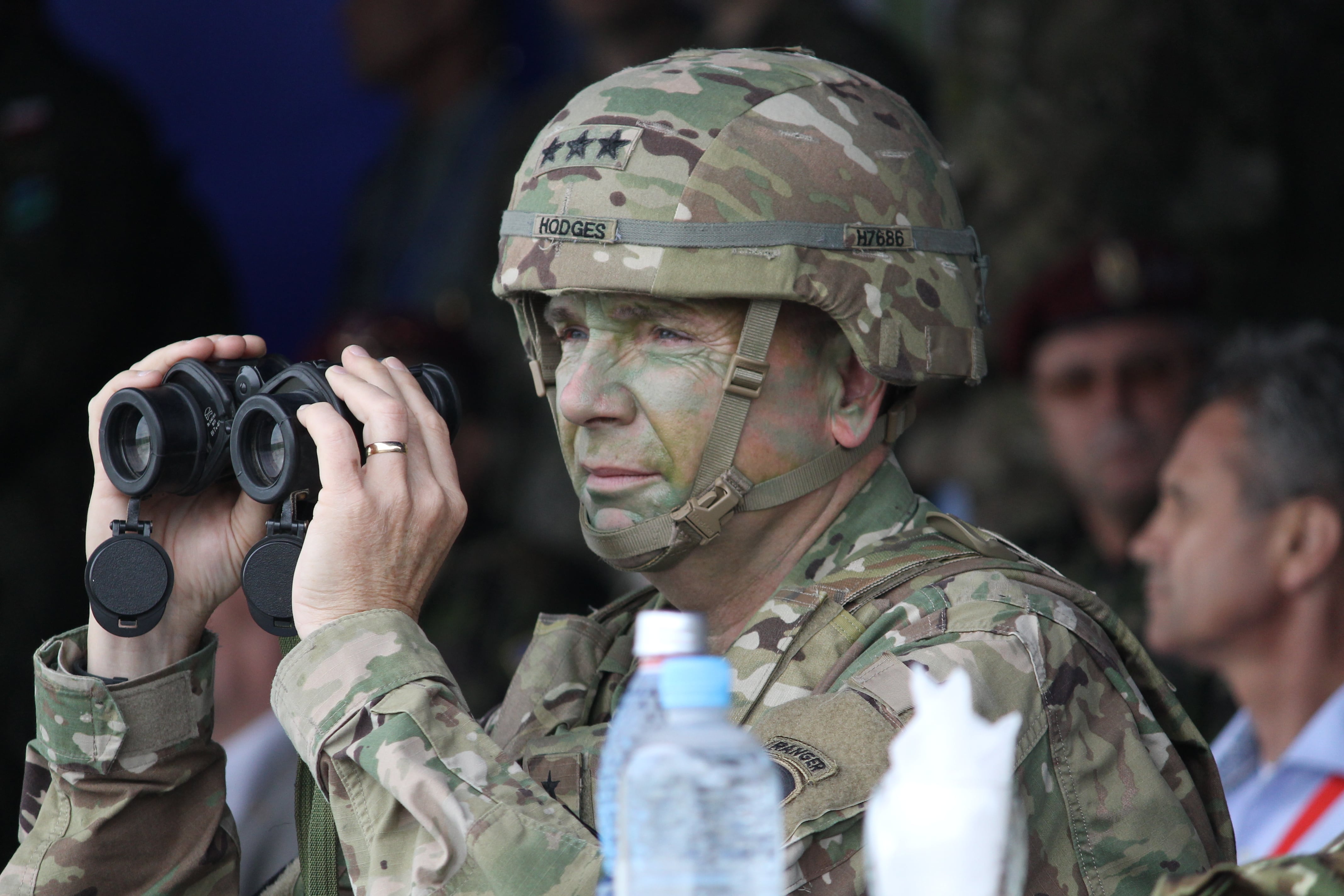WASHINGTON — U.S. Army Europe and Africa’s first Multidomain Task Force was activated on Sept. 16, but the new unit has already cut its teeth in the theater at a long-range, precision-fires exercise in Norway, where officials experimented with high-altitude balloons for targeting, the new task force’s commander told Defense News.
At the first-ever Thunder Cloud exercise in Adenes, Norway, beginning Sept. 9 and wrapping up Sept. 20, the task force and the 41st Field Artillery Brigade exercised an entire sensor-to-shooter operation showcasing shooter targeting and strike capabilities.
The 2nd Signals Brigade also participated in the exercise, bringing network and communications capabilities to link together the sensors and shooters in the operation.
The MDTF is the second of its kind. The first has spent several years in the Indo-Pacific theater helping to inform the U.S. Army’s Multidomain Operations warfighting concept as it morphs into doctrine. The service plans to set up five MDTFs that will align with the Army’s global operational needs. Another MDTF will stand up in the Pacific and another in the Arctic in the coming years.
The MDTF in structure will look similar to the MDTF in the Pacific, based out of Joint Base Lewis-McChord in Washington state, Col. Jonathan Byrom told Defense News in a Sept. 16 interview, but will be much more focused on land operations due to geographic differences.
The task force in Europe — with roughly 380 people — will include a headquarters element, an intelligence, cyberspace, electronic warfare and space detachment or battalion, and a brigade support company, he said.
While the structure is similar to the MDTF in the Pacific, Byrom said, it is obviously going to address relatively different problem sets. While the first MDTF was focused on working with the U.S. Navy primarily, the European-based task force will focus more heavily on its relationship with the U.S. Air Force, he said.
Byrom is tasked to figure out how the European MDTF will be different from the first, and he said he is not going to constrain the unit to operate in the same way it does now in the Pacific, but he will still draw from lessons learned there.
Thunder Cloud gave the MDTF an immediate opportunity to focus on a capability that will be central to future operations. Long-Range Precision Fires, or LRPF, is the top modernization priority for the Army, when building capability to go up against near-peer adversaries like Russia.
“We were testing the full sensor-to-shooter linkage, all the way to gun,” which, in this case, was the Multiple Launch Rocket System (MLRS), Byrom said. “We actually fired some live rockets.”
While the scenario was not that complex, capabilities like the three high-altitude balloons used as targeting sensors were relatively new, marking the first time they were used for this purpose in Europe during an exercise, Byrom said.
The balloons are very agile, don’t have a large footprint, Byrom said, and can fly at about 60,000 to 70,000 feet, so “you are able to see a wide array from those balloons. That’s very helpful.”
One of the challenges as the Army looks to drastically increase the range of its fires capabilities is being able to get sensors to see the targets far off in the distance and guide munitions to those targets.
The exercise proved the balloons can provide flexibility and redundancy, Byrom added.
The 41st Field Artillery Brigade also had the opportunity to exercise training objectives with digital high-frequency linkage between their systems with some new radios, which helped the units understand targeting using some of the new capabilities coming into the force, Byrom noted.
Thunder Cloud also gave the MDTF its first dose of how to manage logistics of moving weapons and equipment across borders in Europe.
RELATED

The unit moved its equipment from Germany to northern Norway including exercising the transportation of MLRS launchers over land and then by sea “in a relatively rapid fashion,” Byrom said.
“Movement between countries in Europe and over water and land and all the various aspects is a skill,” Byrom said, and his team conveyed to him how valuable it was to go through those paces.
“They feel much better prepared after doing this exercise to do so again. I think they [will be able to] do it much more efficiently and quicker,” he added.
The MDTF will next participate in the warfighter exercise for V Corps and the unit will likely be involved in any Defender Europe exercises in the future, where applicable, Byrom said.
“We are looking for opportunities where multidomain operations are part of the exercise,” Byrom said.
Jen Judson is an award-winning journalist covering land warfare for Defense News. She has also worked for Politico and Inside Defense. She holds a Master of Science degree in journalism from Boston University and a Bachelor of Arts degree from Kenyon College.






